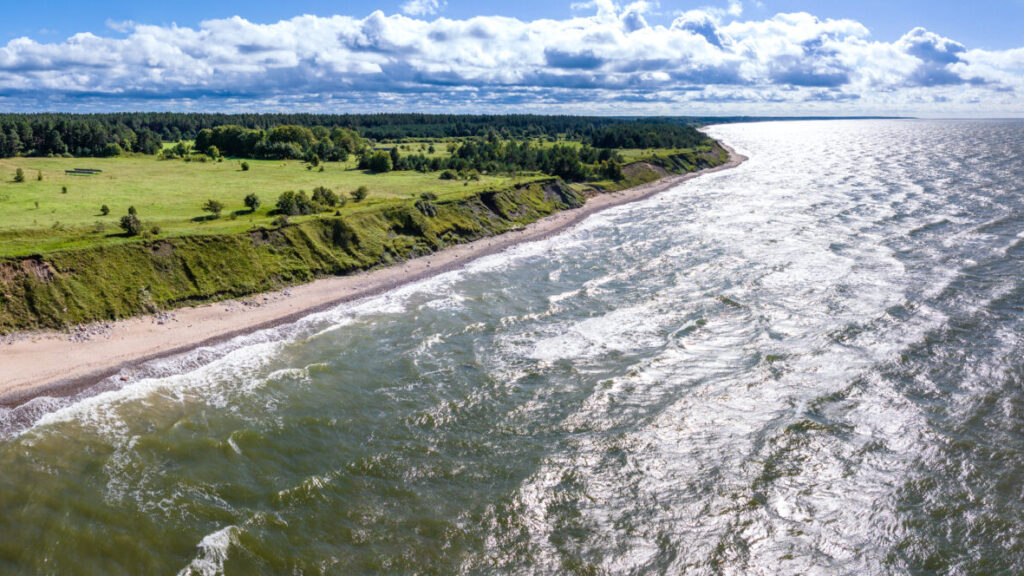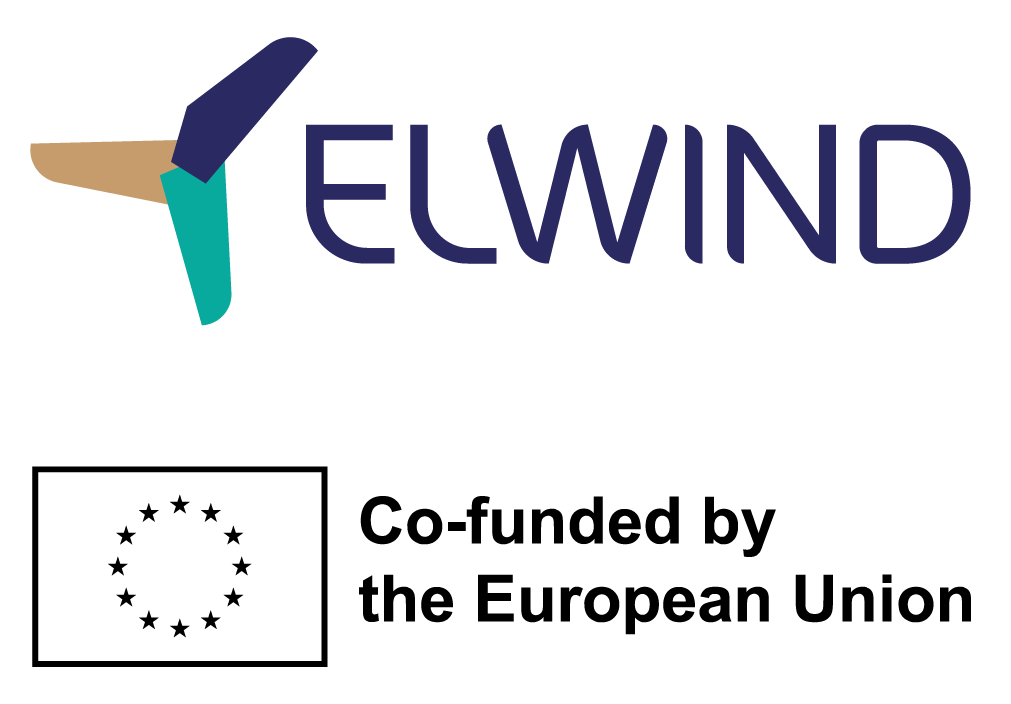In early autumn, the ELWIND team and representatives from municipalities and regions in Latvia, Lithuania, and Estonia visited the Netherlands on a trip organized by the Investment and Development Agency of Latvia (LIAA) and the Embassy of the Kingdom of the Netherlands. They aimed to learn about the Windpark Fryslân and gain valuable insights from local residents, municipalities, and businesses. The ELWIND project is being implemented to strengthen the regional energy market, so the experience of other countries is an important contribution to ELWIND’s expertise.
The Windpark Fryslân, located in the Ijsselmeer region, is the largest wind farm in the world in an inland waters. Built within a Natura 2000 protected area, it has been operational since 2021 and produces 1.5 TWh of electricity annually, covering approximately 1.2% of the Dutch annual
electricity demand. The wind farm can supply power to approximately 500,000 households.
Notably, the Windpark Fryslân was developed using crowdfunding as a tool to engage local support. In the Netherlands, there is a long-standing experience with renewable energy and wind parks. The law requires 50% of the population to be involved in the development of new energy projects. While lack of knowledge is a major barrier to participation in such projects, a crowdfunding campaign keeps citizens informed and involved in the project, in a way becoming passionate ambassadors for the project. Depending on the approach of the potential ELWIND developer, these options could be discussed in Latvia and Estonia.
The visit also included a meeting with representatives of the Southwest Friesland (Súdwest-Fryslân) municipality to discuss the impact of offshore wind parks.This area is unique for its lush landscapes and beautiful waters.Here, the local community was involved prior to the introduction of various energy projects, working groups and monitoring committees were set up to address residents’ concerns and aspirations. Locals actively participated and followed the development of the wind parks, while the developers provided updates on their progress and presented the next steps. As a result, 71 projects have been implemented in the municipality with the developer’s support, such as more sustainable sports facilities with solar panels, heat pumps and insulation materials, as well as music events, an open-air theatre, a museum renovation, a new roof for a school, etc.
“Offshore wind parks are among the symbols associated with the Dutch coastline. Historically, wind energy in the Netherlands was used for water drainage, grain milling, and other purposes, with wind turbines being visible in the landscape as early as the 1990s. This has provided valuable experience on how to develop such projects, how to cooperate at national and local level, and how to involve local communities. Latvia is still on the road to widespread use of green energy, but for several years now we have been thinking about regional energy security and ways to reduce fossil fuel dependence. The Dutch examples are inspiring, and we hope that Latvia can apply at least some of this experience so that renewable energy projects are understandable and acceptable to the entire community,” said Laura Štrovalde, Deputy Director in charge of investment and energy of LIAA.
The trip also included a visit to the port of Eemshaven to understand the role of ports in the offshore wind energy sector. Eemshaven is one of the key ports for the construction and maintenance of wind parks in the North Sea, and it has been used to facilitate the construction of 18 offshore wind parks, including the world’s largest offshore wind park, Hornsea Two. Currently, Eemshaven serves four wind parks.
The port provides services for almost all types of vessels used in wind park operations. Eemshaven is also an important industrial centre, serving the hydrogen industry in the northern part of the Netherlands and the chemical industry Delfjil. Around 8 GW of energy “flows” through the port area every year.
The group also met with representatives of the New Energy Coalition, established in the north of the Netherlands, a region historically recognized as a key national energy supplier with energy-suited infrastructure. The Coalition focuses on energy innovation, research, and education, with a particular emphasis on sustainable energy solutions, including hydrogen, biomethane, and energy system integration. The Coalition’s main objective is to promote the transition to a low-carbon energy system.
The trip ended with a visit to Egmond aan Zee to see the Hollandse Kust Noord wind park. It is notable as one of the fastest offshore wind parks built in the Netherlands. The developer, CrossWind, received a construction permit in 2020 and began operations by 2023. The wind park includes many innovative features, such as floating solar panels and adaptive turbines that ensure a stable energy supply, setting a leading example in advanced energy management systems.
To summarize, key takeaways for the ELWIND team from the visit include:
- building strong ties with local communities is crucial for project success,
- adopting proven models can accelerate progress,
- offshore wind projects present significant potential for local small and medium-sized enterprises, such as engineering companies, transport firms, hotels, catering businesses, metalworking companies, and wind turbine maintenance providers.
An ELWIND-scale project can serve as a booster for regional development. The operational lifetime of a wind park is around 25-30 years, which means decades of security for the local community in terms of jobs and benefits. From a practical point of view, offshore wind parks require an onshore maintenance base, which is usually located in a port as close as possible to the wind park. These are the opportunities for the ports of Liepaja un Ventspils to create relatively high-paying jobs, as well as regional learning hubs.
Several participants from the municipalities acknowledged that seeing positive examples provided ideas they could implement in their own municipalities. For instance, the Kurzeme region, where several wind parks are planned, including the ELWIND offshore wind park, sees wind energy as a crucial future resource. “Unfortunately, the population in the regions is declining, schools, institutions, and factories are closing. The region needs energy and a push for development. Renewable energy projects will mean more electricity in the region, especially for businesses requiring high capacity. Moreover, energy can be transformed into an export commodity,” says Ivo Lemšs, Deputy Executive Director of Ventspils Municipality.
About ELWIND
ELWIND is a cross-border project between Latvia and Estonia for the construction of an offshore wind park in the Baltic Sea. It is an ambitious and environmentally friendly renewable energy project with a combined capacity of up to 2 GW, which will increase the energy independence and security of the region and keep energy prices reasonable, thus reducing costs for businesses and households. In addition, it will create new business opportunities. ELWIND will help to fill the gap in domestic large-scale renewable energy production and contribute to a better functioning open energy market. The offshore wind park is expected to be built and operational by 2035.
The pre-development work for the ELWIND project will end in 2028 with a planned auction in which the right of use of the offshore wind site will be transferred to a qualified developer. The ELWIND project is implemented by the Investment and Development Agency of Latvia (LIAA) and the Estonian Environmental Investment Centre (KIK) in cooperation with the Ministry of Economics of the Republic of Latvia and the Estonian Ministry of Climate.

